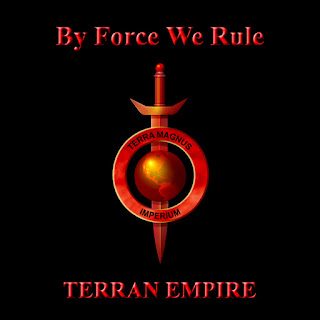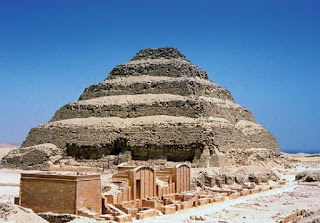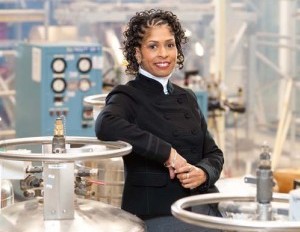Topics: Commentary, Civics, Civil Rights, Human Rights, Star Wars
July 27, 2009, Wikipedia:
Orly Taitz+ (born August 30, 1960)[8] is a Moldovan-American political conspiracy theorist. A dentist, lawyer,[9] and former real estate agent,[10][11] Taitz was a figure in the "birther" movement, which promoted the conspiracy theory that Barack Obama was not a natural-born citizen eligible to serve as President of the United States. Taitz also promotes a number of other conspiracy theories both related and unrelated to Obama. Taitz has initiated a number of lawsuits on behalf of the "birther" movement; all were dismissed by the courts, and on one occasion Taitz was ordered to pay $20,000 as a sanction for misconduct in filing frivolous claims. Taitz has unsuccessfully run for statewide office in California three times.
Taitz alleges that President Obama is not a natural-born citizen of the United States and is therefore ineligible to serve as President. She claims he was born in Kenya and that he falsified his Selective Service papers and his application to the Illinois bar.[22] "I believe [Obama] is the most dangerous thing one can imagine, in that he represents radical communism and radical Islam: He was born and raised in radical Islam, all of his associations are with radical Islam, and he was groomed in the environment of the dirty Chicago mafia. Can there be anything scarier than that?" [1]
April 4, 2011, Politico:
Birtherism is the latest and most enduring version of a theory in search of facts.
The original smear against Obama was that he was a crypto-Muslim, floated in 2004 by perennial Illinois political candidate and serial litigant Andy Martin. Other related versions of this theory alleged that Obama was educated in an Indonesian “madrassa” or steeped in Islamist ideology from a young age, and the theories began to spread virally after Obama appeared on the national stage – to the casual observer, from nowhere – with his early 2007 presidential campaign announcement.
All through that year, the Obama campaign – with the affirmation of most leaders of both parties – aggressively battled that smear by emphasizing his Christian faith. Obama’s controversial but emphatically Christian pastor emerged as a campaign issue and the belief that he was a Muslim seemed to lose traction.
Then, as Obama marched toward the presidency, a new suggestion emerged: That he was not eligible to serve.
That theory first emerged in the spring of 2008, as Clinton supporters circulated an anonymous email questioning Obama’s citizenship.
“Barack Obama’s mother was living in Kenya with his Arab-African father late in her pregnancy. She was not allowed to travel by plane then, so Barack Obama was born there and his mother then took him to Hawaii to register his birth,” asserted one chain email that surfaced on the urban legend site Snopes.com in April 2008. [2]
February 14, 2014, Outside the Beltway:
While the American public as a whole has a largely negative view of both Vladmir Putin and Russia as a whole, there is a segment of the American public that has, over the past several years developed an oddly positive opinion of a nation that Mitt Romney, to the cheers of many on the right, called our biggest geopolitical rival, and a man who was once a top agent in the KGB. What’s odd is that these cheers are not coming from the left side of the political aisle as they might have in the 1930s, but from the right. Back in August, I observed that people such as Pat Buchanan and Rod Dreher have been heaping praise on Putin for things such as the anti-gay “propaganda” laws that he push through the Russian legislature and compared him positively to President Obama and what seems to be the new version of Buchanan’s “culture war” argument from the 1992 Presidential campaign. In December, Buchanan and Dreher were back with more praise for the Russian President and his authoritarian, anti-equality, and allegedly “pro-Christian” policies. [3]
October 24, 2016, New Republic:
Public-opinion polling shows that Trump’s low opinion of American elections has practically become Republican Party orthodoxy. According to a Reuters/Ipsos poll released on Friday, Republicans have an “unprecedented” level of “concern and mistrust in the system.” Roughly 70 percent of Republican voters believe that if Hillary Clinton wins the election, it’ll be due to fraud. In both this poll and an NBC News/SurveyMonkey poll, only half of Republicans say they’d accept a Clinton victory. (In the latter poll, by contrast, 82 percent of Democrats said they would accept a Trump victory.)
This suspicious Republican electorate is joined by growing ranks of conservative politicians, pundits, and intellectuals. They’re all increasingly willing to say that the existing American political system is hopelessly flawed and needs to be rolled back to the days before blacks and women could vote. On the most obvious level, this can be seen in moves by Republican governors all over America to make voting more difficult, through stringent voting ID laws, new hurdles to registration, and the curtailment of early-voting options. Equally significant has been the gutting of key provisions of the Voting Rights Act by conservative Supreme Court justices in the 2013 Shelby Country v. Holder ruling.
But these overt forms of voting suppression are merely the most visible manifestations of a larger questioning of democracy on the political right. Trump’s anti-democratic rhetoric—and the eagerness of so many good, white patriotic Americans to cheer it and believe it—is a symptom of the larger trend on the political right toward doubting the legitimacy of the American system. The question we need to be asking isn’t, “Why is Trump being such a jerk?” It’s, “Why is the American Right giving up on democracy?” [4]
One interesting side bar: Orly Taitz+ - the original birther conspiracy theorist before our erstwhile Putin-puppet, Manchurian candidate president* took up the mantle - like two of his three serial marriages is herself an immigrant. In the 1994 book "Black Labor, White Wealth" by Dr. Claude Anderson, the 1850 census found the slave population coming to parity with the majority white population. Up to that point, "white" had a specificity and excluded certain European countries. Because that parity - even for a slave population - meant an increase in power, the definition of that artificial demarcation got "liberal." To maintain superior numbers, the US opened the floodgates. Czechs, Italians, Jews and Poles would eventually be considered a part of the majority, as if their exclusion had never occurred. It's always been a numbers game. The immigration policies regarding LEGAL immigration ala Stephen Miller would delay the date white Americans become a numerical minority by five years. It moved from originally 2050 to 2042; it had recently shifted by two years to 2044, apparently. The policies again, on legal immigration thus push it a year before the original 2050 date, which is a deliberate calculus, but it doesn't stop it. The specific targeting of a diverse diaspora is quite deliberate. Couple that with the fever pitched effort to suppress the votes of people of color, you have a naked exercise in white supremacy you can easily measure. It's been the nature of the nation from its genocidal (Native Americans) and kidnapping (African Americans) origins. And now it has a voice: the personification of its calamitous zeitgeist: a true man of lawlessness. A need to look back to a pristine time of superiority. It clarifies opposition to people of color, deport any and all Hispanic/Latino immigrants (legal or not), label whole nations in the Caribbean and on the African continent s-house countries (as if "hole" was the insult); the LGBT (they biologically cannot make white babies, to paraphrase Steve King's ridiculous statement). It makes the rise of racist organizations - be they alt-right, birther, homophobic, KKK, Neo Nazi - have a consistent, base theme. That theme is fear.
“Fear is the path to the dark side…fear leads to anger…anger leads to hate...hate leads to suffering.” Yoda, "Star Wars: The Phantom Menace," May 6, 2014 1. Orly Taitz, Wikipedia
2. Birtherism: Where it all began, Ben Smith and Byron Tau, Politico
3. Explaining The Conservative Love Affair With Vladimir Putin: It’s All About Opposing Obama, Doug Mataconis, Outside the Beltway
4. The Right Is Giving Up on Democracy, Jeet Heer, New Republic

















